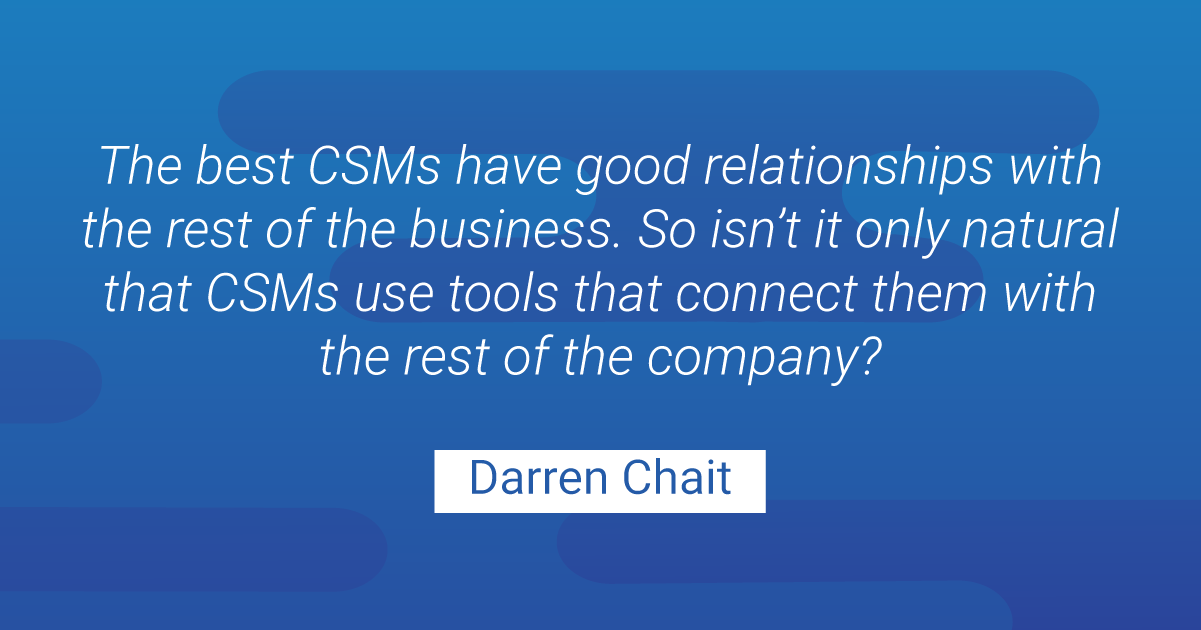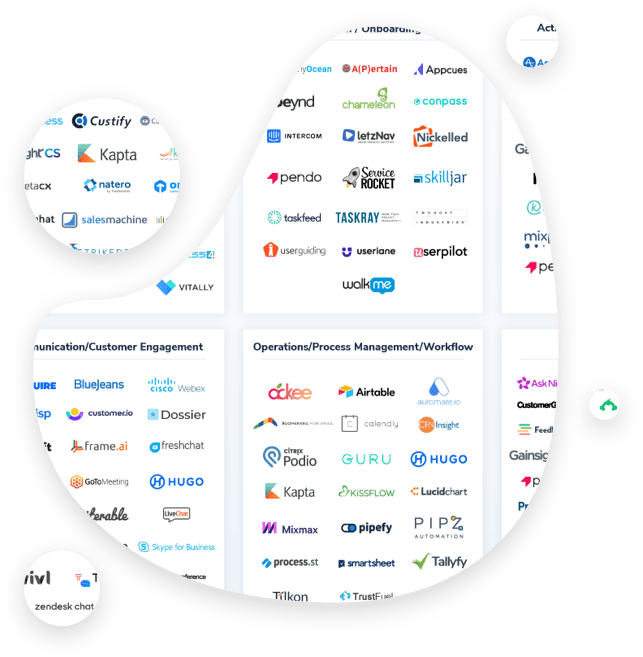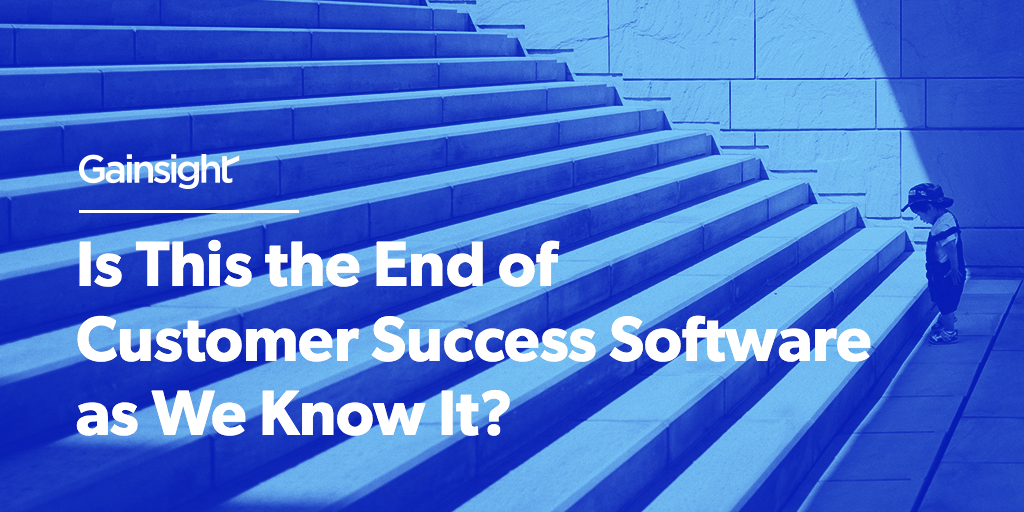The critical role played by customer success (CS) teams is well known, as is the importance of the customer success software powering these teams. But, could thinking about customer success software as a category be leading us down the wrong path?
If I was to tell you in 2009 that in just a few years there would be a new category of software almost as prolific as CRMs, customer support, and project management software you wouldn’t have believed me. And now, as we all know, customer success is one of the fastest growing software categories. In fact, from 2019 to 2024, the customer success platforms market is projected to grow from $854 million to a staggering $2.66 billion.
As co-founders of Hugo—a Connected Meeting Notes software—we have found ourselves deep in the customer success software world. Hugo is used by many customer success teams all over the world and we’re regular speakers and sponsors of industry events like Pulse. But, we recently realized that we could be undermining our industry’s success by viewing customer success as a distinct software category. Here’s why.
Understanding the Customer Success Software Market
It all started quite innocently. We knew that Hugo was commonly being used by customer success teams, along with Gainsight CS and other customer success platforms. And, when we went about building our own customer success function we started asking around for the products that we needed in our CS stack. Ideas ranging from Calendly to Zoom, and from Pipefy to Google Docs were all in the mix. I kept a running list in a document, ready for us to evaluate what we would use for our team.
When the list crossed 50, I knew we were sitting on something valuable. There was no definitive list of customer success software out there, even though there were more than 70 different lists of software for sales teams! So, with the intention of helping others in our position, I blocked out a few hours one Friday afternoon to format a list to share with other CS leaders.
For completeness, I scoured the web and asked every customer success leader I knew which tools the customer success teams at their companies and clients were using everyday. Without much digging, I got to 150 different pieces of software! That’s 150 distinct tools that leading customer success teams are using everyday… Incredible.
I started the task of researching each vendor, ready to categorize the solutions for each reference. But, something didn’t add up. When I looked into each of these tools, only a handful referred to themselves as customer success software. In fact, for the overwhelming majority, there was no mention of ‘customer success’ anywhere on their website or in their materials. Here are solutions powering some of the best customer success teams out there, but are in fact NOT ‘customer success’ software solutions according to the vendors.
Categorically Speaking…
Putting that insight to the side momentarily, I moved on to grouping the 150 different software solutions into logical categories based on the nature of each tool. Experimenting with different category labels, I settled on eight labels that were inclusive of all the tools on my list:
- Customer Success Platforms
- Adoption/Onboarding
- Activity/Engagement Monitoring
- CRMs
- Communication/Customer Engagement
- Operations/Process Management/Workflow
- CSAT/Feedback/NPS
- Help/Support/Ticketing
My co-founder, a product guy, walked past my desk as I started formatting software logos on a page.
Josh: “Hey, what are you doing?”
Me: “Building a market map for customer success software so we can share the list of tools
that we made for ourselves.”
Josh: “Nice, but why do you have product team and support team apps on there? My team uses those analytics tools and customer support isn’t customer success, so how can you say that Zendesk is a customer success tool for example?”
He had a point. The same could be said for CRMs—a quintessential sales tool. Zoom? Zapier? Drift? How are they customer success tools?
Re-thinking Customer Success
Josh got me thinking. Customer success is a department with a critical role in subscription businesses, but is it truly a distinct software category? To be an effective customer success manager you need to have oversight of your customers, often achieved with a good customer success platform. But if you want to be a great customer success manager (CSM), you need to understand a customer’s specific engagement with your product.
You’re doomed to fail with ineffective onboarding. You’ll invariably experience churn if the customer has support issues which aren’t being resolved. No one can argue with the role CS plays with renewal and upsell alongside the sales team—managed in your CRM, of course. But, analytics, onboarding, customer support, and CRMs are not traditionally customer success software!
Customer Success in Every Department
There’s plenty of great content out there that refers to customer success as the hub to the spokes that interface with almost every other department—be it product, engineering, support, sales, design, executive, or finance. The best CSMs have good relationships with the rest of the business. So isn’t it only natural that CSMs use tools that connect them with the rest of the company?

Customer success is the voice of the customer and must successfully interface with the rest of the business. To do this, they need access to every tool that touches the customer. This enables them to share customer insights and data with the rest of the business. Some examples include:
Supplying these tools is the best way to ensure CSMs have the full customer picture and can be the interface between the customer and the whole of the business.
Or Is It Every Department in Customer Success?
Another perspective with a similar outcome is that every other department can be customer-centric and interface with customer success by being involved in their tools. Why can’t we give product, engineering, executive, and finance teams access to our customer success tools?
If these teams want to understand the customer and be involved in customer success, they can find customer data in our CS platform and other CS tools. This is another trend that’s been recognized by software companies—Gainsight included with their Customer Cloud products like Gainsight PX (for product teams) and Gainsight RO (for revenue and account management teams). These are customer success tools specifically designed for use by other teams in the business. Same for Hugo, which shares meeting insights by providing everyone in the business with access to the product, rather than the other way around!
CS Software = Business Software
Regardless of how your organization selects its software, you can achieve the same outcome. Customer success software needs to be used by, or at the very least, accessible to everyone.
The ideal software solutions for customer success teams are the pieces of software that enable them to get their multi-faceted, cross-functional job done well. If customer success is truly going to play the central role that it ought to, we need to change our perspective on the tooling and information that’s made available to the customer success team. Leadership can’t look at CS software like it does software for the accounting team or even the sales team. Customer success teams need to be armed with the tools that enable each facet of the job to be done well. The rest of the business also needs to have access to those tools to be truly customer-centric.

Sneak Peek at the 2019 Customer Success Market Map
The Biggest Takeaway
We decided to publish the 2019 Customer Success Market Map as it was incredibly helpful to us and others that we shared it with. I hope you find it interesting too. You can download a copy here.
While the Market Map reflects the eight categories above—many of which are outside the conventional definition of customer success—I predict that the 2020 Market Map will have even more categories (and tools of course). The hope is that more and more businesses will understand the central, cross-functional, and integrated role customer success teams play today.
Treating customer success as a category should be cautioned, as unlike any other department, function or ‘category’, the role of the CSM is by its nature, cross-functional. This may be known in other realms, but it’s time we recognize that customer success software may ultimately just be general business software.
Not the End, Just the Beginning
Interestingly, just a few days after publishing the Market Map, Scott Brinker, the original creator of the Martech 5000 reached out to us. He recounted how he went through a similar process when the marketing tech world was in its infancy back in 2011. And now, the latest landscape released in April 2019 had 7,040 different marketing tools!

The most recent version of the Marketing Technology Landscape Supergraphic, released in April 2019.
Guess how many tools were on the market map in 2011, the first year it was produced? Just 150—the very same number on our 2019 Customer Success Market Map!

The marketing technology landscape is growing exponentially year over year.
I think it’s clear that ‘customer success software’ is just getting started…

